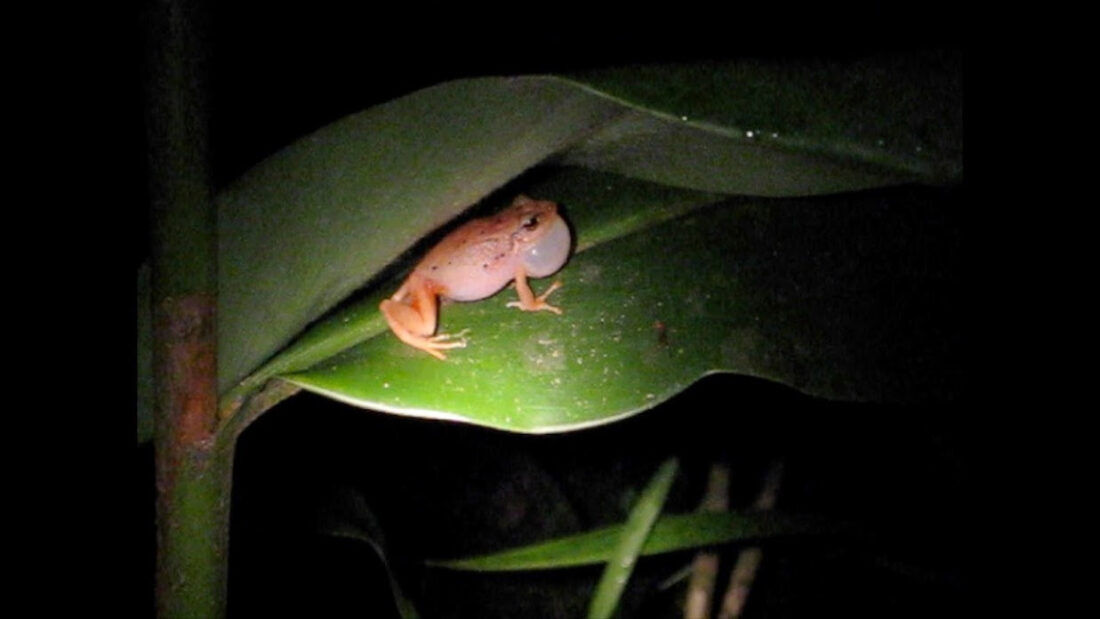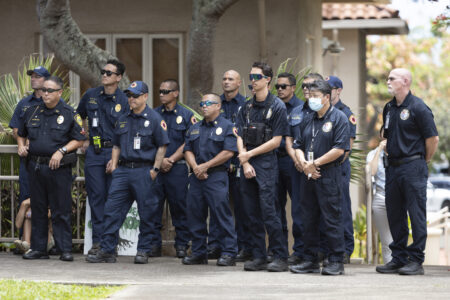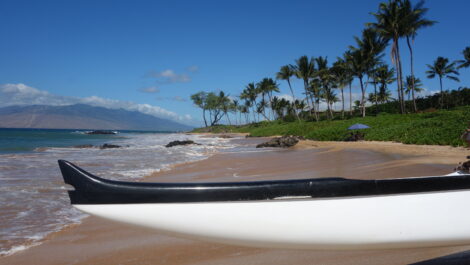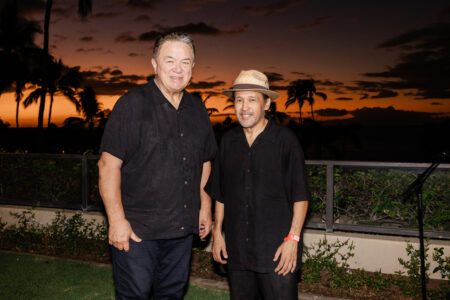Coqui frogs on Maui; containment protects quiet nights and the environment

Submitted by Lissa Strohecker of the Maui Invasive Species Committee
Co-QUI Co-QUI! The call of the coqui frog is ringing throughout some of our Haiku neighborhoods. Though it may have seemed the frogs were gone in January and February, they were probably lying low, or at least staying quiet. Only the male coqui call and only when the weather is warm enough that they have energy left after a day of foraging. Coqui are tiny and it takes effort to retain their claim as one of the loudest frogs in the world.
Amphibians like the coqui frog don’t generate heat, relying instead on external air temperatures for their body functions.
As summer comes, like kids on summer break the coqui stay up late making too much noise—at least for human ears. Then, as temperatures cool off, the noise level drops. “The coqui are still there, they’re just quiescent,” explains William Mautz.
Dr. Mautz is a Professor Emeritus of Biology at the University of Hawaii at Hilo, who has done research on the invasion ecology of coqui frogs on Hawaii Island
In Hawaii, where coqui lack natural predators, populations can reach densities two to three times greater than what occurs in their native Puerto Rico. Then there’s their biology: “The main advantage they have as an invasive species is direct development of eggs,” he says. Coqui frogs hatch as froglets. This frees them from relying on standing water. Damp leaf litter is enough. Other factors like temperature and rainfall limit their range.
According to Mautz, the coqui has spread upward about as far as it potentially could on Hawaii Island. “Volcano is about their upper limit for maintaining a sustaining population.” Volcano is situated at about 3,800 feet.
Research showed that on Hawaii Island, higher-elevation coqui frogs stop calling at 57 degrees Fahrenheit and return to regular chorusing levels at 62 degrees. At lower elevations, coqui frogs behave slightly differently, quieting when temperatures reach 66 degrees and reaching full chorus at 68 degrees. Like Kihei residents who wear jackets to Kula, coqui behavior varies somewhat based on what they’ve acclimated to.
We notice coqui because they’re loud, but coqui have impacts on the environment as well. Coqui eat nonnative insects, mainly ants and amphipods in lower elevations, but at higher elevations, coqui would dine on what’s around them and 3800 feet is within the range of Hawaii’s native insects.
It’s not just diet; when coqui frogs are eating they are also excreting. Nitrogen levels in coqui-invaded areas are higher than in non-infested areas. Increase in nitrogen in the soil favors non-native plants, further shifting the balance away from native forests–a concern that with implications for a changing climate.
“If it got warmer and wetter, frogs could get into higher elevations,” says Mautz.
On Maui, the potential habitat for coqui overlaps with just about everywhere people are, thanks to our tendency to add plants (and water) to our local landscape. Although the coqui chorus can be heard loud and clear in some parts of Haiku, these tiny frogs don’t yet occupy their full range. Community control
groups that control coqui within their own neighborhoods are also helping protect the rest of the island, along with efforts to contain frogs at the perimeter and eliminate outlying populations.
If you live in an area with coqui, you can help quiet your yard by modifying the habitat so it’s less coqui- -friendly, removing dense vegetation and keeping the grass cut short. MISC can help you with supplies and resources for direct control.
If you hear coqui in a new area, report it to 643PEST.org or directly to MISC: mauiinvasive.org/coqui-frog/ or the coqui crew at 808-633-6646.




